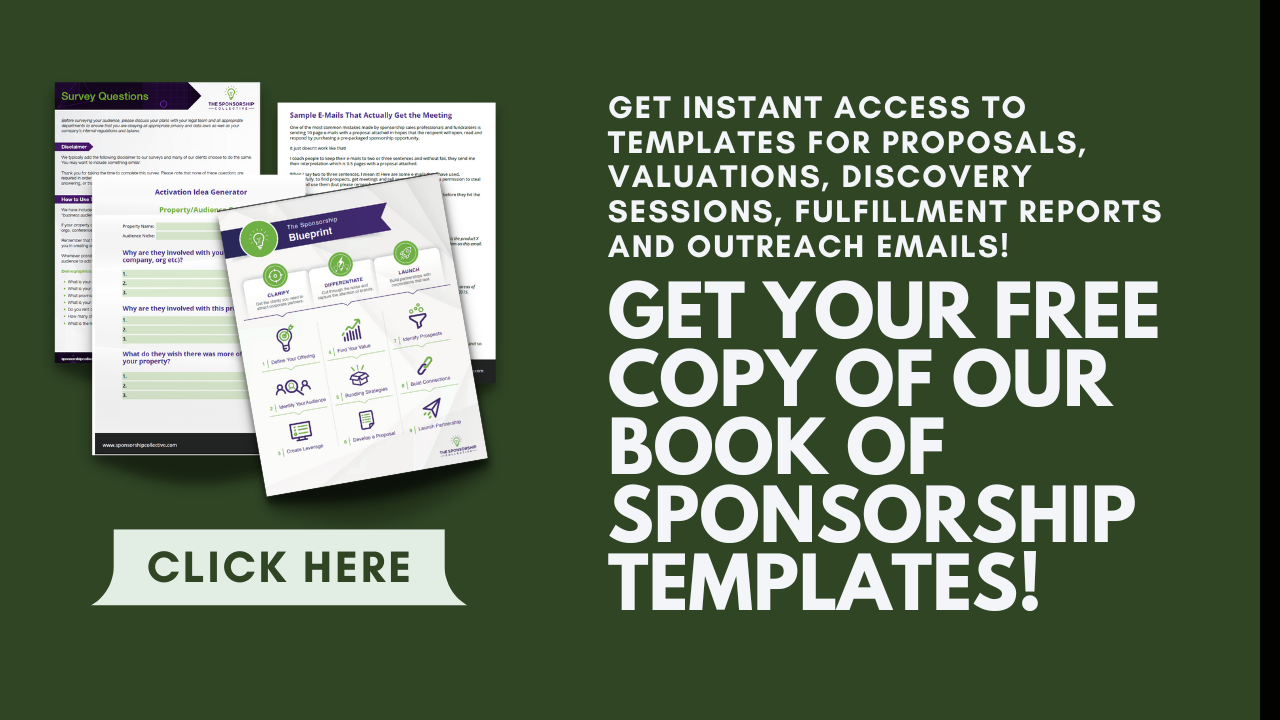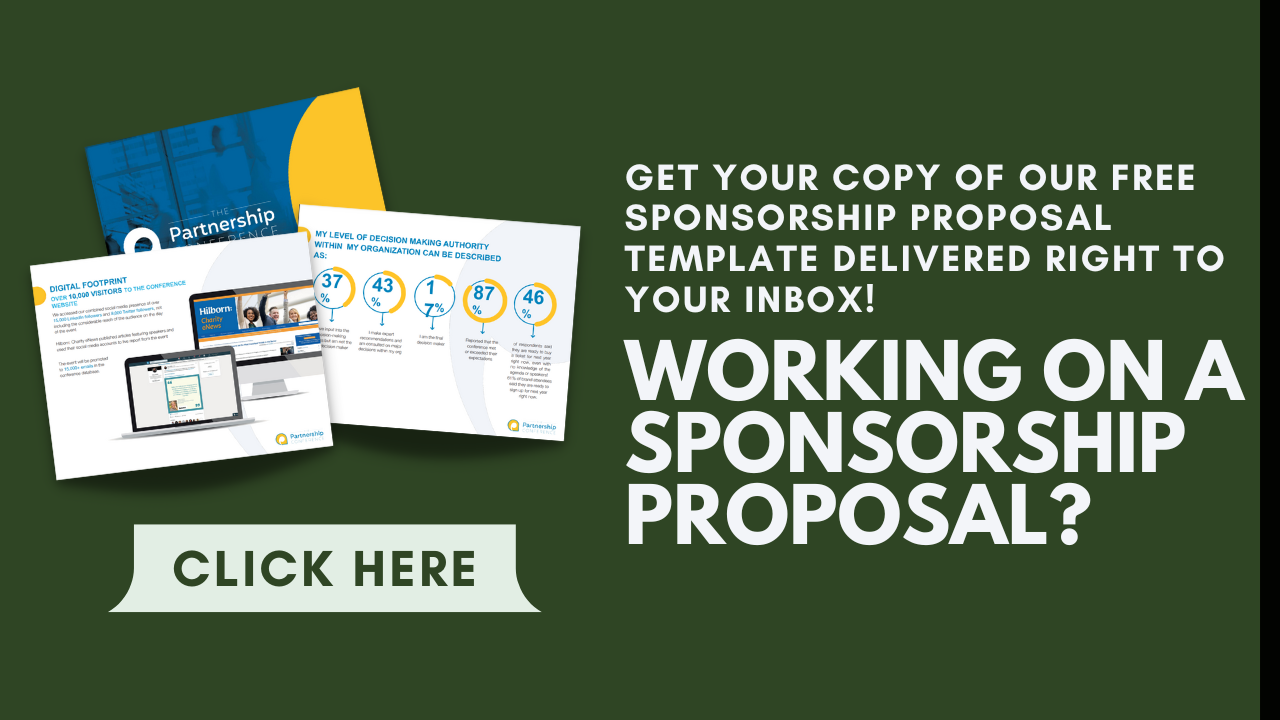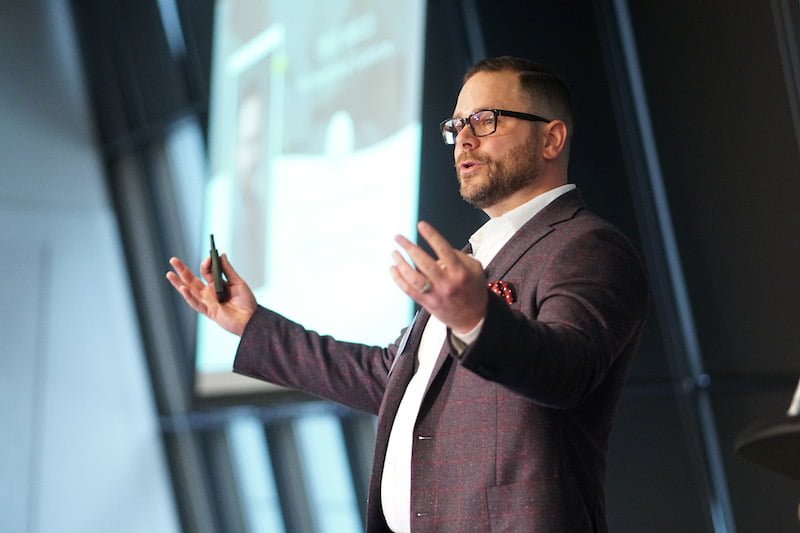Do me a favor and check your email outbox right now. How many emails have you sent to sponsors in the last week? Last month? Count them, please.
Now, how many of those emails have you gotten replies to? The answer is probably zero, right? If not zero, then very close to it.
You don’t hear back when you email sponsors, but don’t feel bad. A lot of sponsorship seekers face this plight, but they don’t seem to know why.
Perhaps they need to attach their sponsorship proposals in the email. Hmm, that didn’t work, so maybe no attachments.
Maybe it’s the email headline, the body length, or the time of day they’re emailing. Perhaps it’s the number of emails sent and if you just send a follow-up (or three), you’ll finally hear back.
You can drive yourself batty trying to figure out what’s driving the lack of replies. In the meantime, you keep sending more emails, because what else are you supposed to do?
I know why your sponsors are ignoring your emails. I’m here to tell you all about it and what you can start doing differently.
Let’s get started.
Here’s Why Sponsors Don’t Reply to Your Emails
Does it boil down to only one reason why sponsors don’t reply to emails? Sometimes, yes, or it could be a combination of things.
Even if it is only one reason, it likely won’t be the same reason for all sponsorship seekers. Without further ado then, here are six reasons your sponsors aren’t bothering to respond to your emails.

Your Emails Are Too Long
What are you trying to achieve when you send that initial email out?
Are you trying to explain the whole history of your company or organization, the legacy of your event or opportunity, your audience, your assets, why you need funding, and how much?
If you answered yes, then I have to ask you, why are you trying to cram the entire sponsorship process into a single email?
That’s a lot of info for anybody to digest, let alone a complete and total stranger.
If you’re writing an email to sponsorship prospects that looks more like a novella, then it’s no wonder you’re not getting anything back in return. No one’s going to have the time to process all those words and paragraphs.
Your goal when sending an email to a prospect is to schedule a meeting, which is known as the discovery session. You needn’t write paragraphs to do that, but mere sentences.
If you’re trying to ask for a discovery meeting but you’re still being too wordy, then once again, you won’t get a reply.
No one has time to read a 3,000-word email from a stranger no matter what the content is. Just no. Keep it short and sweet, and you may just get more replies.
You’re Too Salesy
Do you know why companies start with welcome emails as part of their drip email campaigns? It’s because selling right off the bat is frowned upon.
Instead, a company will take you through its sales funnel a little bit, build a relationship, and then, when you’re more interested and receptive, offer you a product or service.
Sure, once you become a customer, then a company will send you nothing but emails promoting its latest products or services, but you’re a customer by that point. You’re supposed to be interested in those emails.
For many sponsorship seekers I work with, sponsorship is not their full-time job. Thus, it’s easy to make this mistake when dealing with sponsors, even if you would never jump straight to sales at your nine-to-five job.
Still, just for my sake, imagine if the next time you had a new client, you took things out of order in the sales process.
The whole thing would crash and burn spectacularly, right? You’re sure of it.
That’s why you shouldn’t try to sell the whole kit and kaboodle to your sponsorship prospect without even having had a proper phone call with them, let alone having never seen them in person.
You’ve never spoken to this person in your life. You can’t say for certain that they need certain assets and activations of yours because you just don’t know.
That’s what the discovery session is for, to help you learn about the prospect and what they may need.
Until you’ve had the discovery session, there should be no sales tactics in your emails. None.
You Attached Your Sponsorship Proposal (Or Anything, Really) to the Email
Oh boy, here we go. This is one of the most common mistakes that I see sponsorship seekers make.
Then they’ll ask me why they didn’t hear back from their prospects. When I ask if they attached a sponsorship proposal or sponsorship sales package, they tell me yes, they did.
Sending one’s sponsorship proposal too soon is a cardinal sin that so, so many sponsorship seekers are guilty of.
I’ve talked about this on the blog before, but a lot of the time, this sense of urgency stems from a sponsorship seeker feeling they have this one shot only to grab a prospect’s attention.
As you’ll recall though, you’re not trying to push the entire sponsorship sales process through a single email. That’s ludicrous. All you’re trying to do is lock in the discovery session.
Even if you achieve that objective, you’re not bringing your sponsorship proposal to the discovery session, or the meeting after that, and perhaps not even the meeting after that.
“Okay, Chris,” I can hear you saying. “Then when in the world do I get to submit my sponsorship proposal?”
I can’t tell you that because there’s no definitive timeline. Essentially, whenever the prospect asks for the proposal is when you should send it.
Could they ask to see it after the second meeting? Certainly. It’s unlikely, but it has happened.
More often than not, several meetings will transpire before the prospect asks to see the proposal.
Until then, just be patient, sit on it, and be sure to amend the proposal to include custom assets and activations. Stock sponsorship can blow your sale, and you don’t want that to happen after you’ve come this far!
I do vilify attaching a sponsorship proposal in your first email to a prospect, but it’s not just the proposals. It’s any single-page or multi-page document.
I’ll simplify matters even further. It’s any attachment. That’s right, any attachment.

I don’t mean to be rude here, but when you email a prospect, they don’t know you, so they don’t care. They don’t want to see your proposal. They don’t want to see your assets.
They want to hear what you can do for them, and then they’ll begin to grow interested in the documents above.
If you’re still not totally convinced that you shouldn’t attach your sponsorship proposal in your emails anyway, here’s a reason that ought to convince you.
Many email filters will see that the email with attachments is coming from a first-time sender and block it. Your message could get sent to the spam filter, often unbeknownst to you!
You Don’t Specify Why You’re Emailing
I know, I know, you’re sending an email to a prospect because you ultimately want sponsorship.
Yes, true, but sponsorship is a multi-step process, so exactly what in the process do you want?
Is it a discovery meeting? (Yes.) Is it to negotiate terms? (No.) Is it a post-event meeting? (Not this early).
The answer is not money. Even if you do want money from a prospect, you should never just say that, and especially not in an email. Then your message reeks of Nigerian prince scams.
Remember, the correct answer is that you’re emailing to set up a discovery session. Everything that’s included in the body of your email should be to push that goal.
You can start with a line or two of small talk to break the ice, but then you want to launch into why you’re contacting the prospect.
This way, a prospect can open your email, quickly scan it in 30 seconds, and understand that you want to meet with them.
If they’re amenable to that, then they’ll reply. If they’re not interested, you won’t hear anything. It’s that simple.
You’re Only Contacting Prospects by Email, Not Phone
Email is convenient. You can send messages from your phone, tablet, or computer anytime and they arrive instantly.
However, emails cannot be all that you rely on in your sponsorship program. At some point, you have to be willing to pick up the phone and talk to your prospects.
No, I’m not necessarily saying you have to make cold calls (although you do sometimes), but you do have to use the phone.
You can’t have a discovery session through email. Well, you can, but it’s very time-consuming, as a prospect needs to reply to a dozen or so questions. That’s going to take time, perhaps time that they don’t even have.
It’s perfectly acceptable to use email as your initial means of communication as you first reach out to a prospect. It’s faster to send an email than to pick up the phone, dial, wait, get in touch with the right party, wait some more, and then probably leave a voicemail.
However, once you get to the point of scheduling a discovery session, you need to be willing to put the emailing behind you.
You can still ping-pong a few emails throughout your working arrangement with the sponsor, but you’ll talk on the phone a lot more by that point or meet in person.
You’re Massing-Emailing Prospects
Going back to my point about the convenience of email, some people get a little too over-reliant on email when it comes to communicating with your prospects.
You might think that since you’re reaching out to all your prospects for the same purpose–to set up a discovery session and hopefully begin a sponsorship relationship–it’s perfectly reasonable if you mass-email everyone with the same message.
Rather than personalize 100 different messages, you add 100 contacts to the same email and e-blast them.
Have you ever been put in a large group text chat by one of your friends? You have their number in your phone and maybe the number of another friend or two, but the other eight people in the chat are complete strangers.
You start getting responses from people identifiable by only their phone numbers. You’re too busy wondering “who the heck is this?” to get any meaningful interaction out of the chat.
I’m mentioning this because that’s what your prospects are wondering. They want to know why they’ve been emailed with 99 other companies and who this company is that replied to your email.
You might get a reply from your prospect, but it won’t be the response you were gunning for. Instead, they’ll ask you to please take them off the list because they don’t want your random emails clogging their inbox.
E-blasting is by and large deemed unprofessional. To you, it was a time-saving measure. To your prospect, an e-blast lacks personalization or care.
Okay, you’re thinking, so maybe you’ll do a smaller e-blast of only 25 prospects.
Sure, you could do that. What happens if all 25 prospects respond to you? It’s unlikely, but for the sake of this example, let’s say it happens.
In your email body, you said “can we meet this Wednesday, the 13th, at 9:45 for a discovery session at my office?” All 25 prospects say yes.
Well, you’re only one person, and you can’t stretch or pause time, so you can’t possibly meet with everyone. You’d have to leave 24 people in the cold, and that doesn’t bode well for a future sponsorship deal.
Conclusion
If a sponsor is ignoring your emails, there’s got to be a reason for it. Perhaps you’re too salesy, or maybe you’re sending an eblast with 100 other contacts on the recipients list. You might attach your sponsorship proposal to your email or write a mini-novel.
Now that you understand how these behaviors drive sponsors away, you can begin sending more effective emails that land you a discovery meeting!
- About the Author
- Latest Posts
Chris Baylis is the Founder and Editor-in-Chief of The Sponsorship Collective.
After spending several years in the field as a sponsorship professional and consultant, Chris now spends his time working with clients to help them understand their audiences, build activations that sponsors want, apply market values to their assets and build strategies that drive sales.
Read More about Chris Baylis

